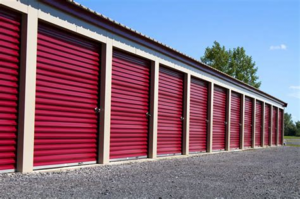As we move into 2025, the real estate investment landscape continues to evolve, and one asset class that stands out for its resilience and growth potential is self-storage facilities. Often referred to as the “hidden gem” of real estate, storage facilities have proven to be a reliable investment through economic ups and downs. In this blog post, we’ll explore why storage facilities are a smart investment in 2025, the trends shaping the industry, and how you can capitalize on this booming sector.
Why Storage Facilities Are a Smart Investment in 2025
Self-storage facilities have become a cornerstone of real estate investing, and their appeal is only growing stronger. Here’s why:
- Recession-Resistant Demand
Storage facilities thrive in both good times and bad. During economic booms, people accumulate more belongings and need extra space. During downturns, downsizing and relocations drive demand for storage units. This dual demand makes storage facilities a stable investment. - Low Operational Costs
Compared to other types of real estate, storage facilities have relatively low operating costs. There’s no need for costly amenities, complex maintenance, or extensive staffing. This translates to higher profit margins for investors. - High Occupancy Rates
The demand for storage space continues to outpace supply in many markets, leading to high occupancy rates and steady rental income. In 2025, this trend is expected to persist as urbanization and lifestyle changes drive the need for storage. - Scalability
Storage facilities are highly scalable. Investors can start with a single facility and expand their portfolio over time, benefiting from economies of scale and increased cash flow.
Key Trends Shaping Storage Facility Investments in 2025
- Urbanization and Space Constraints
As urban areas become more densely populated, living spaces are shrinking. This trend is driving demand for storage units, particularly in cities where residents need a place to store seasonal items, furniture, and other belongings. - E-Commerce Growth
The rise of e-commerce has created a need for storage space among small businesses and entrepreneurs. Many online retailers use storage units as affordable warehouses for their inventory, creating a new revenue stream for facility owners. - Technology Integration
Technology is transforming the storage industry. In 2025, expect to see more facilities offering online reservations, contactless access, and smart security systems. These features enhance the customer experience and streamline operations. - Climate-Controlled Units
As consumers store more sensitive items like electronics, artwork, and documents, the demand for climate-controlled units is growing. Investors who offer these premium options can command higher rental rates. - Sustainability Initiatives
Environmental consciousness is influencing the storage industry. Investors are incorporating energy-efficient lighting, solar panels, and sustainable building materials to reduce costs and appeal to eco-conscious customers.
Opportunities for Investors in 2025
- Value-Add Properties
Older storage facilities often have untapped potential. By upgrading security systems, adding climate-controlled units, or improving landscaping, investors can increase property value and attract higher-paying tenants. - Niche Markets
Specialized storage facilities, such as those for RVs, boats, or wine collections, are gaining popularity. These niche markets often have less competition and can generate higher returns. - Secondary and Tertiary Markets
While primary markets like Los Angeles and New York are saturated, secondary and tertiary markets offer significant growth potential. These areas often have lower acquisition costs and less competition, making them ideal for new investors. - Partnerships and Syndications
Real estate syndications allow multiple investors to pool their resources and purchase larger facilities. This approach provides access to lucrative deals that might be out of reach for individual investors. - Build-to-Suit Developments
Developing new storage facilities in high-demand areas can be highly profitable. By tailoring the design to meet local needs, investors can maximize occupancy rates and rental income.
Challenges to Consider
While storage facilities offer numerous benefits, they are not without challenges. In 2025, investors should be mindful of:
- Market Saturation: In some areas, the storage market is becoming oversaturated, leading to increased competition and lower rental rates.
- Regulatory Hurdles: Zoning laws and permitting requirements can vary widely, potentially delaying or complicating new developments.
- Economic Sensitivity: While storage facilities are generally recession-resistant, prolonged economic downturns can still impact demand.
- Management Complexity: Effective management is crucial to maintaining high occupancy rates and customer satisfaction. Poor management can lead to increased vacancies and operational issues.
How to Succeed in Storage Facility Investments
- Conduct Thorough Market Research
Analyze local demand, competition, and demographic trends before investing. Understanding the market is key to identifying profitable opportunities. - Focus on Location
Location is critical in the storage industry. Look for facilities in areas with high population density, limited competition, and strong demand drivers like urbanization or e-commerce activity. - Leverage Technology
Invest in technology to enhance the customer experience and streamline operations. Online booking systems, smart access controls, and advanced security features can set your facility apart. - Offer Premium Options
Climate-controlled units, vehicle storage, and other premium options can attract higher-paying tenants and increase revenue. - Prioritize Customer Service
Happy customers are more likely to stay long-term and recommend your facility to others. Focus on providing excellent service and maintaining a clean, secure environment.
Conclusion
Storage facility investments are poised for continued growth in 2025, driven by urbanization, e-commerce, and changing consumer lifestyles. With their low operational costs, high cash flow potential, and recession-resistant demand, storage facilities offer a compelling opportunity for real estate investors.
Whether you’re a seasoned investor or just starting out, now is the time to explore the potential of storage facility investments. By staying ahead of trends, leveraging technology, and focusing on customer needs, you can build a profitable and resilient portfolio in this dynamic sector.




